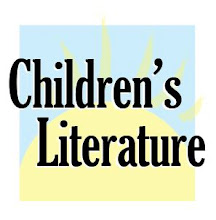How to Write Poetry for Magazines
by Suzanne E. Henshon, Ph.D.
If you write poetry for children, a good place to break into print is in children's magazines. You'll develop a publishing resume before you approach book publishers with submissions for anthologies or your own book of verse. As with any kind of writing, start by reading high-quality published examples to develop a sense of the craft.
Shel Silverstein's Where the Sidewalk Ends and A Light in the Attic are modern classics. Also check out the work of Jack Prelutsky, Mary Ann Hoberman, Karla Kuskin, Paul Fleischman and others who have received critical acclaim. Read their stand-alone poems (found in anthologies and collections) to get a sense of the structure of poetry that is not a full-length picture book.
Writing poetry requires several skills: observation, brevity, rhythm, and the ability to go beyond cliches. Poems capture a moment in time or an idea that children believe to be a universal truth. They also create a strong visual image in the reader's mind. Be sure to match the poem's content to the age of the child. Younger children are more literal, whereas middle grade and young adult readers can handle abstract ideas.
Once you've written several poems, start researching magazine markets. I studied Ladybug, a magazine that publishes poetry, fiction, and short stories. Because Ladybug is for children ages 3-6, poems are short and usually rhyme; the verses are experienced in a literal sense by a child. Poems are accompanied by vivid illustrations, and the poetry is meant to be read aloud. Most importantly, verses reflect children's experiences; the narrators sound young but are not so childish that adults lose interest.
As you craft poetry, study what is currently being published. If you want to be published in a specific magazine, get to know the editors' tastes by reading it. Look at the length and content of the published poems.
In Ladybug, a few poems are two pages long, but most poems take up just a page--about four to eight lines. Here are some other tips:
- Write with images. When you write children's poetry, it is important to think about concrete images and themes. Make your poetry accessible and visual at the same time.
- Write for children and adults. Be attentive to how your poem will sound to a dual audience of children and parents. While the most important audience is children, you should also think about entertaining the adults who are reading your poems aloud.
- Tell a story. These "stories," though, are not as complex as a picture book. They tend to revolve around a single incident. Think about the central event of the poem and create a narrator (preferably a young child). Consider how you can tell the story in an authentically young voice as you begin crafting your poem.
- Make a point. It's not enough to join several rhyming lines together; a background story must tie the verse together, leading to an insight that children will understand and a theme that parents will appreciate.
- Be daring. Use fresh language and steer away from cliches. Take a new look at old images, sharing vivid details and memorable phrases with young readers.
- Read the magazine. As you write, think about the layout of your piece within the magazine. Get an understanding of what kinds of poems have been published lately, and think about if your work will be a suitable match. Before you send your poem in, make sure you proofread and include a SASE.
Suzanna Henshon is a reviewer for Children's Literature. This article was previously published in Children's Book Insider: The Newsletter for Children's Writers, http://www.cbiclubhouse.com/.





Just wanted to give you a shout from the valley
ReplyDeleteof the sun, great information. Much appreciated.
child